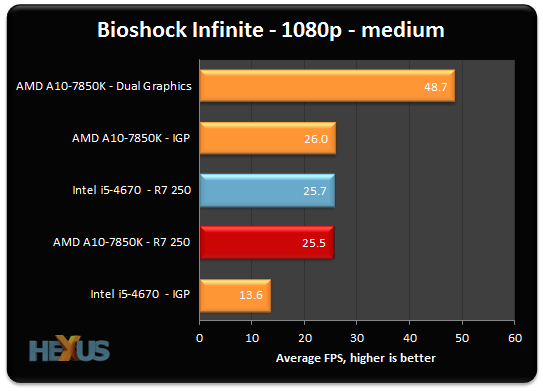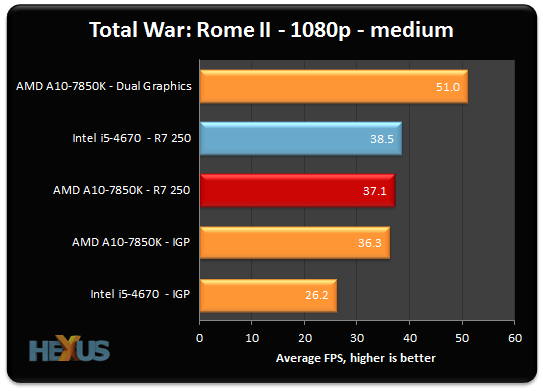Running the numbers

Some key observations here: the A10-7850K's onboard R7 graphics are actually a tiny bit faster than the R7 250 card. There's no real difference when running the Sapphire card on either the AMD or Intel platforms. Teaming the R7 250 and R7 IGP increases performance by 55 per cent over IGP-only numbers.
Near-perfect scaling is not possible because the final benchmark score takes non-gaming attributes such as physics into account. Looking at the graphics component alone, the A10-7850K IGP scores 1,657 marks while Dual Graphics manages 2,875, or a 74 per cent hike.
Oh, and Intel's HD 4600 IGP is no match for AMD's... but you knew that, right?

Bioshock at medium-quality settings is just about playable on the AMD-housed combinations. Mirroring what we saw in 3DMark, the Kaveri IGP is at least as good as the Sapphire R7 250 when it's run on either platform. Teaming the AMD IGP and Sapphire card pays huge dividends here, with a performance uplift of 87 per cent, turning the game from semi-choppy to very playable.

Here the Sapphire card manages to eke ahead of the AMD IGP. It's also telling that, for the first time, the speedier Intel CPU cores offer a measurable in-game advantage over AMD's. But put the AMD IGP and Sapphire card together and the combination wins out easily.

Cementing what we've observed thus far, the Sapphire R7 250 is about the same speed as the AMD IGP, there's very little performance deviation when switching between AMD A10 and Intel Core i5 platforms, AMD's IGP is superior to Intel's, and, finally, Dual Graphics works well enough. We didn't experience any obvious rendering problems via Dual Graphics, and consultation of frame-rate logs showed no errant behaviour.









